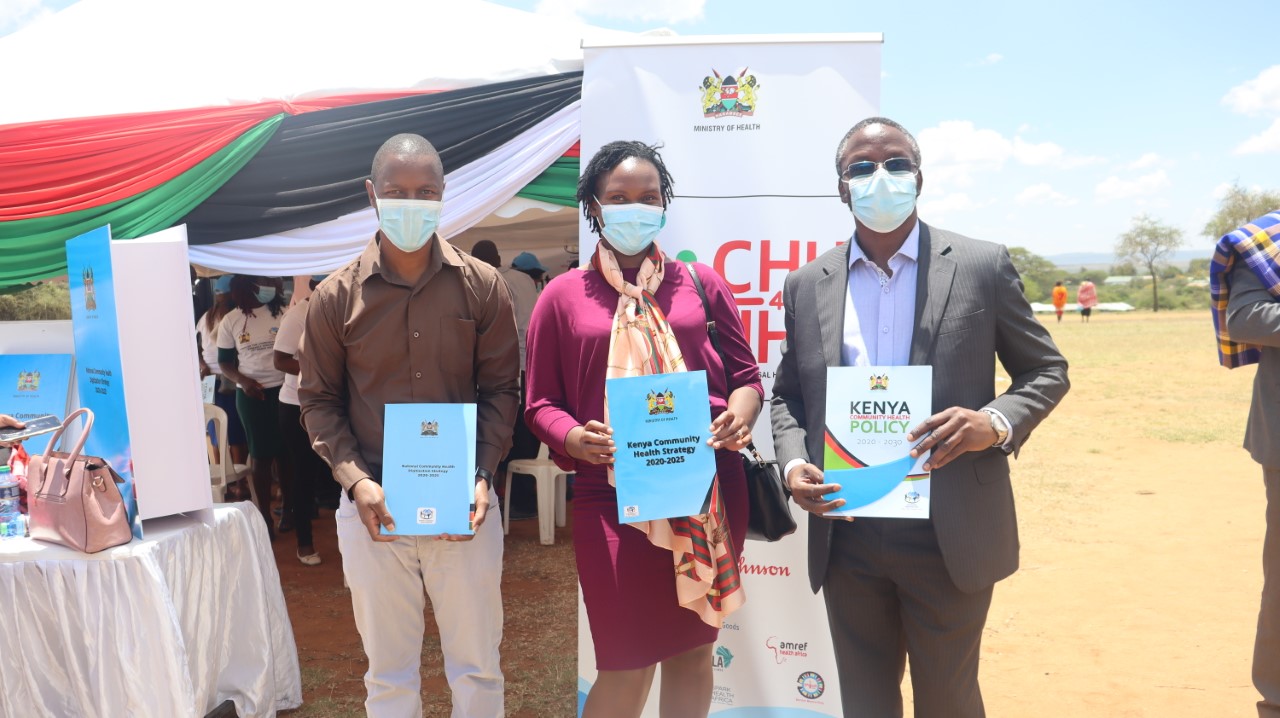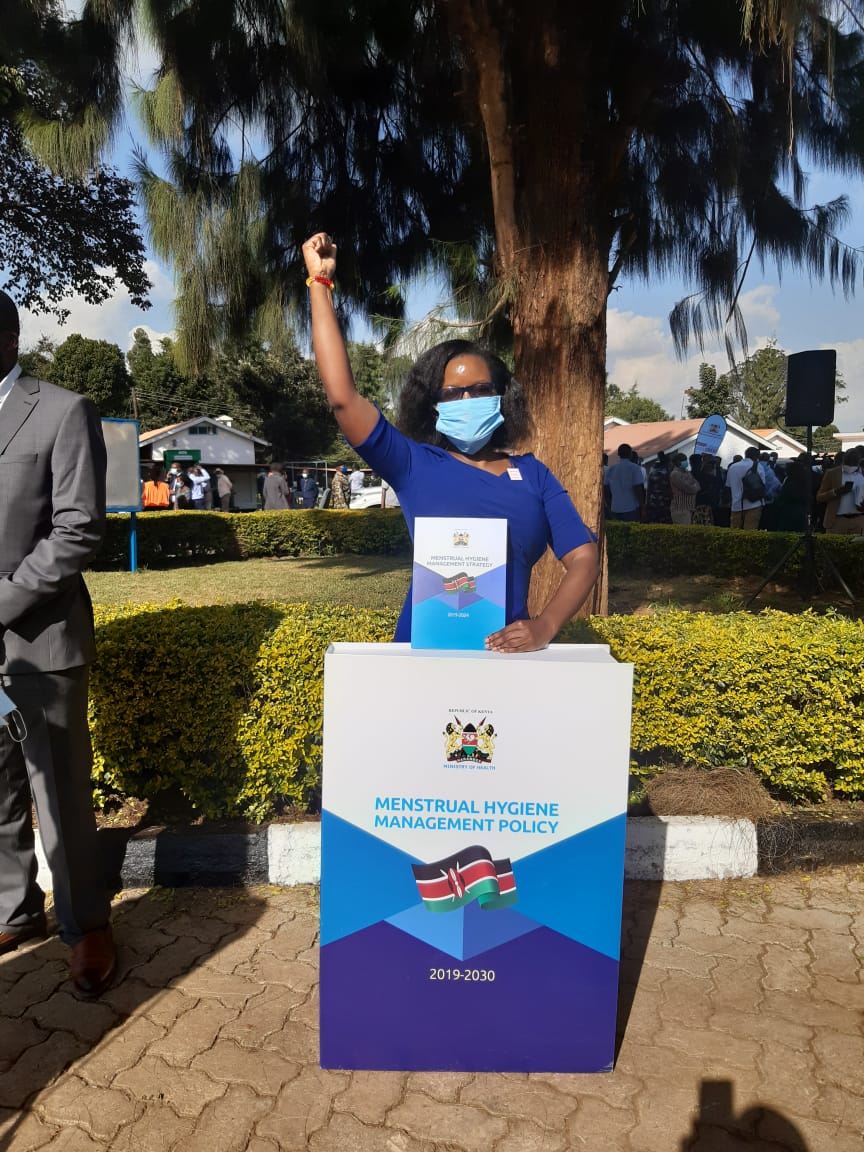Champion Against FGM and Child Marriage: Let The Tongue Be
Friday, 27 November, 2020

Martha, 39-years-old, lives in Marsabit County in Kenya near the Ethiopian border. She is part of the Borana tribe. Martha is an influential woman in her community; she is a matron at the local primary school, a spiritual leader, and leads a Women’s Group where women discuss their issues, mentor children in school about drug abuse, and participate in income-generating activities such as selling chickens and renting guest houses.
Most importantly, Martha is a champion to end female genital mutilation/cutting (FGM/C) and child marriage in her community.
“I’m in a women’s group and was already having discussions about FGM and child marriage before Amref came on the ground. We had already started these campaigns, but people had not taken them up,” Martha tells us in her home where she has warmly welcomed us.
Martha, unfortunately, underwent the cut when she was 7 or 8 years old. In her community, it is considered normal. “Prevalence of FGM in the Borana community is almost 100%. There is almost no woman you see here that hasn’t been cut. In our community, a person who hasn’t gone through FGM goes through a lot of stigmas,” Martha says.
Martha decided to stand up against FGM/C after she had her first child: “My first child was delivered by Cesarean section because I could not give birth normally as a result of FGM. For my second boy as I was pushing that child during delivery, the wound from the first C-section operation opened and I almost died. I was told that all of this happened because of FGM.”
“Giving birth to my first baby at the hospital was the first time I learned about FGM. That’s when I first realized that FGM was truly dangerous because I almost died both times.”
“This is why I don’t want to have another baby. I’m afraid that I might die the next time I have a baby.”
“As I began to talk to other women about FGM, I noticed that because they thought FGM was normal, and that it happened to everyone, these women didn’t realize that the difficulty they had while giving birth was abnormal. I had to tell them that this. When you give birth as a woman with FGM, that’s when you truly realize how dangerous it is.”
Even though she was already having discussions about FGM/C with her community, Martha became even more active after attending seminars and discussions led by Koota Injena, our initiative. Other organizations had tried to come to Martha’s community to get them to end the practice of FGM/C but they were unsuccessful. Martha tells us why Koota Injena is different:
“Before Koota Injena, people were being forced to give up the cut. But with Koota Injena, it’s an invitation to discuss and learn, so people are talking now. And not being forced. FGM is part of the culture and has been for thousands of years, you can’t just stop it in one day. Before they would arrest people. But with Koota Injena, people talk, people discuss this issue unlike before.”
Koota Injena teaches champions like Martha how to hold productive discussions about these sensitive topics and equips her with messages that she can use to slowly bring people to her side.
To educate those around her, Martha holds meetings every Saturday, going from village to village. She has also taught her women’s group the same skills she learned through Koota Injena: “I also use my women’s groups – I teach them the messages and tell them to spread them as well.”
“One thing I tell people is that FGM is part of our culture. It is something that we have created, it is something that we continue, but we can also end it. Long ago in Borana culture, there was a tradition of throwing away all first-borns. When you gave birth to your first male, you abandoned him in the forest. This practice was stopped over time.”
“There was also a tradition where a married woman could be insulted and beaten up by anyone in the community, and her husband was not expected to defend her. Slowly that was abandoned too. So, FGM can be abandoned too.”
Another way to Martha educates her community is through storytelling:
“I tell communities that there is a reason that the clitoris was put there. I give the example of the eye, it’s for you to see. For you to taste, your tongue is there. The clitoris is also there for a reason, so don’t remove it.”
“I also tell them this story: Imagine you invite two people to have lunch at your home. One has a tongue, but the other does not. You’ve made them a flavourful meal with a lot of spices and salt. You feed both of them, and the one who has a tongue consumes all his food and comes for more portions. The person without a tongue is not enjoying his meal. So, let “the tongue” be.”
Although Koota Injena only came to her community a short time ago, things are gradually changing, and a new generation of girls is growing up without the cut. There is, of course, still some resistance: “As a woman, I have been insulted so many times by both men and women in the community.” In Martha’s community, women typically have no say in community issues and are taught to just follow the men’s lead. This has proved challenging for getting some women to abandon the practice: “But, women are also slowly getting the messages through the various Women’s Groups in the community.”
“Another challenge is that Ethiopia is very close by so when a girl’s parents still want their daughter to be cut, she is taken by motorbike or walks to Ethiopia to get cut where it’s easier to do that.”
Despite these challenges, Martha has hope for her community: “The youth listen and are open to listening. Old men see women like me as dangerous, as women who want to corrupt the children and the culture. Also, a woman taking lead is a problem because it’s not normal for women to lead here.”
“It is a gradual process so people are taking these messages, but slowly. The people who are supporting Koota Injena the most are young people, and the young men are already saying they won’t marry circumcised girls. They are really helping the program.”
When asked about what kind of future she envisions for the girls in her community, Martha says, “Girls are the most important people in the community. They really help their families when they are educated. So it is really important that girls are educated. My dream is to see the girls continue their education, have value in the eyes of others, and to see FGM end. “
“My dream is also to continue working with Koota Injena. It’s not only here that FGM is being practised; I want to see these messages reach more interior communities where many girls do not even have the chance to get an education.”




